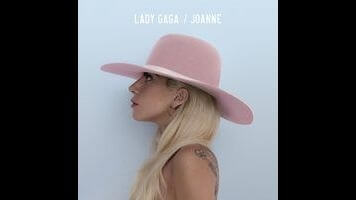Lady Gaga gets back on the right track with Joanne

On her flamboyant early albums, Lady Gaga’s fascination with fame led to trenchant societal observations and subversions. The tepid 2013 album Artpop reversed that trend. With its vapid, debauched commentary—the kind at which she once sneered—the record wasn’t from the perspective of an outsider looking askance at celebrity culture, but from an artist who had internalized and embraced fame’s worst facets.
Post-Artpop, Gaga smartly retreated from being, well, Lady Gaga, and dialed back both her music and style. This reinvention involved collaborating with Tony Bennett on a jazz album, Cheek To Cheek; acting on American Horror Story: Hotel; and co-writing a grand, Oscar-nominated song, “Til It Happens To You.” Gaga is wisely keeping these detours separate from her pop career. Joanne, Artpop’s proper follow-up, contains no ham-fisted attempts at authenticity. Instead, Gaga tries to find a middle ground between her sophisticated present and glitzy, electropop past.
Joanne’s collaborators and co-writers are all comfortable with genre fluidity. Besides producer Mark Ronson, Gaga worked with Beck, Tame Impala’s Kevin Parker, Queens Of The Stone Age’s Josh Homme, Florence Welch, Father John Misty, and BloodPop. However, Joanne at heart is a singer-songwriter album, with an emphasis on smart hooks and taut arrangements that place Gaga’s vocals firmly at the forefront. The record finds her belting out songs like a ’60s girl-group leader (the sepia-toned, horn-peppered “Come To Mama”), conjuring Stevie Nicks circa “Rhiannon” (the dewy vocal intro of “Diamond Heart”), or unleashing an Emmylou Harris-like warble (the superlative, stripped-down title track). Gaga’s always possessed one of music’s most unique singing voices, and on this album, its bluesy grit and raspy soul overtones are more prominent.








![HBO teases new Euphoria, Larry David, and much more in 2026 sizzle reel [Updated]](https://img.pastemagazine.com/wp-content/avuploads/2025/12/12100344/MixCollage-12-Dec-2025-09-56-AM-9137.jpg)































